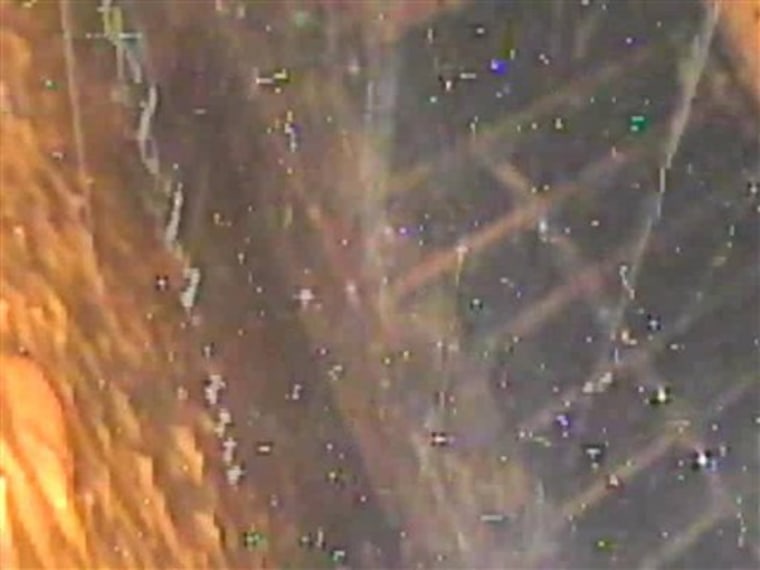Radiation-blurred images taken inside one of Japan's tsunami-hit nuclear reactors Thursday showed steam, unidentified parts and rusty metal surfaces scarred by 10 months' exposure to heat and humidity.
The photos that were the first inside look since the disaster found none of the reactor's melted fuel or its cooling water but confirmed stable temperatures and showed no major damage or ruptures caused by the earthquake last March, said Junichi Matsumoto, spokesman for the plant operator, Tokyo Electric Power Co.
Pipes and grates inside the reactor's containment vessel were seen in some images. Other photos were dark and blurry, resembling abstract paintings. Experts are studying the most obscured photos to identify which reactor parts are there. Radiation was visible as static, or electronic interference with the equipment being used.
The photos also showed the inner wall of the container had been heavily deteriorated by the high temperatures and humidity, Matsumoto said.
TEPCO workers inserted the endoscope — an industrial version of the kind of endoscope doctors use — through a hole in the beaker-shaped container at the Fukushima Dai-ichi plant's No. 2 reactor, hoping the first look inside since the crisis would help them better assess reactor conditions and make repairs.
High temperatures and radiation leaks had prevented the close-up view until now. Results of the 70-minute operation were mixed.
"Given the harsh environment that we had to operate, we did quite well. It's a first step," Matsumoto said. "But we could not spot any signs of fuel, unfortunately."
He said it would take more time and a better technology to get to the melted fuel, most of which has fallen straight down into the area that the endoscope could not reach. TEPCO hopes to use the endoscope to look inside the two other reactors that had meltdowns but that also would require customization of the equipment and further reduction of radiation levels.
The endoscope failed to find the water surface, indicating less-than-expected levels inside the primary containment vessel and questioning the accuracy of water monitors, Matsumoto said.
Radiation-tainted cooling water has been leaking from all three damaged reactors, pooling in massive amounts around the nuclear plant. Determining the No. 2 reactor's water levels could have helped locate cracks or damage causing some of the leaks.
Better assessment will help workers know how best to plug holes and cracks in the containment vessel — a protective chamber outside the core — to contain the radiation leaks and gradually work toward dismantling the reactors.
Three of six reactors at the Fukushima plant melted down after the March 11 earthquake and tsunami knocked out the plant's cooling systems and set off the world's worst nuclear accident since Chernobyl.
TEPCO and nuclear officials have said that melted fuel probably fell to the bottom of the core in each unit, most likely breaching the bottom of the core and falling into the primary containment vessel, some dropping to its concrete floor.
Experts have said those are simulation results and that exact location and condition of the fuel could not be known until they have a first-hand observation inside.
The probe Thursday successfully recorded the temperature inside the containment vessel at 44.7 Celsius (112 F), confirming it stayed below the boiling point and qualifying a "cold shutdown state," the stable condition that the government had declared in December despite skepticism from experts.
The government has said that it would take 40 years until the Fukushima plant is fully decommissioned.
